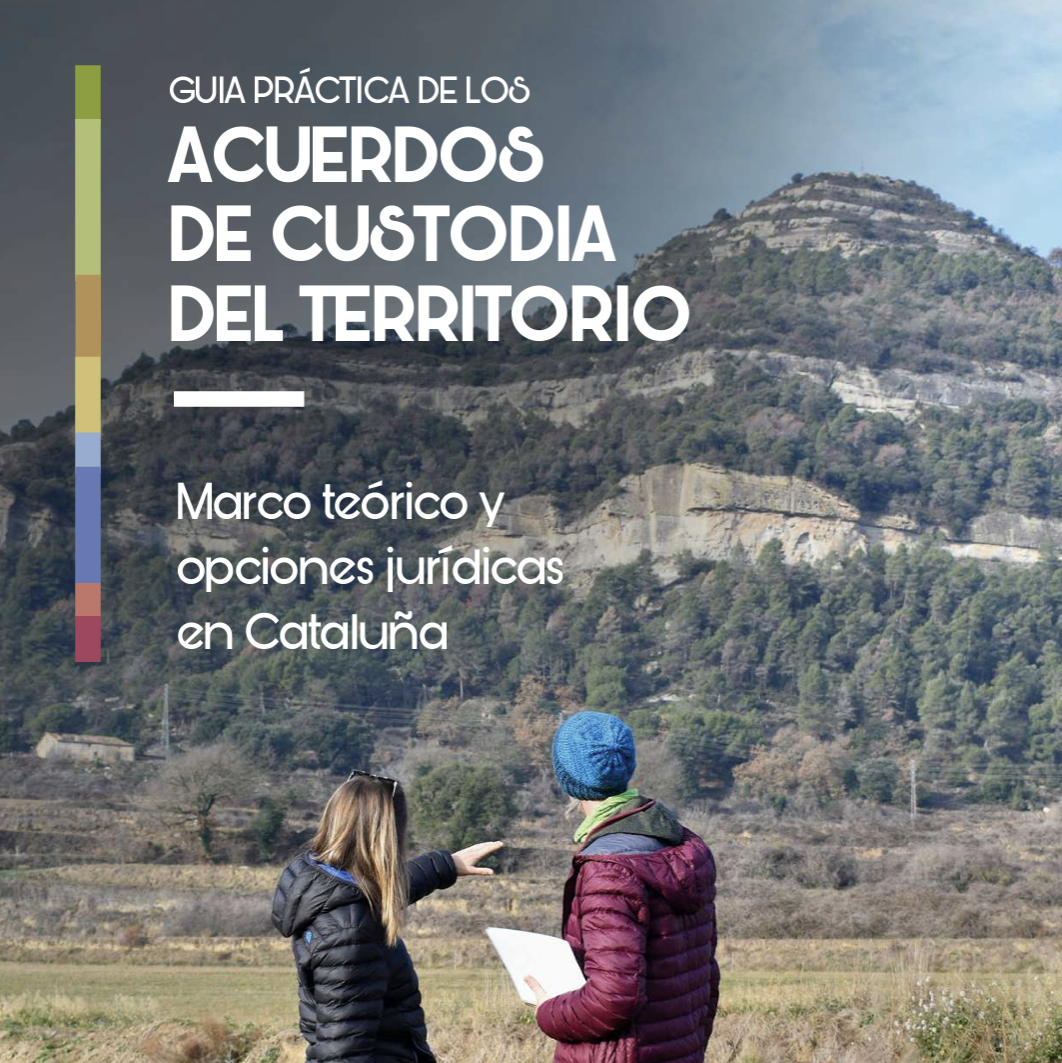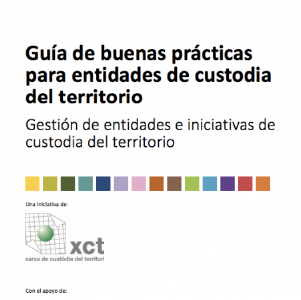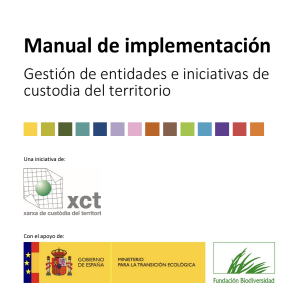Advice
Frequently asked questions
Why set up as a land stewardship entity?
- To contribute to the protection of the natural, cultural and landscape values of the territory in which the entity acts.
- To protect values of special relevance in the territory: an ecosystem, a river, a species, a historical element, or a place of socio-cultural value.
- To promote practices of good use and conservation of natural resources.
- To support landowners and managers in planning, protection, and management, taking into account the needs of the land and the people who live there.
- To provide social, economic, cultural, educational and leisure opportunities.
- To ensure, from your entity and with full autonomy, legal protection of the territory for the common social interest and for future generations.
- To provide a well-preserved territory that offers opportunities to educate society in long-term sustainable economic development.
How does a land stewardship entity work?
- In Spain, a land stewardship entity does not have its own legal form, although it must be a non-profit organisation. Thus, an association, foundation, consortium, city council or other similar public bodies can act as a stewardship entity, if nature conservation is one of its objectives. Law 42/2007 on Natural Heritage and Biodiversity contains the definitions of both the entity and the stewardship agreements. Other regional regulations also develop land stewardship.
- The activity of land stewardship entities is complex and demanding. It is advisable to ensure that the organisation is solid, that it can act, and that it has social and institutional recognition and a team capable of responding to landowners, negotiating agreements, and advising and supervising them in the long term.
- It is very useful to develop a strategic, master or operational plan for the organisation and to follow its guidelines. The plan should demonstrate the technical and economic feasibility, and the ways in which resources can be obtained.
- The statutes should be drafted or revised to include the objective of acting as a land stewardship entity. The statutes should be in line with current legislation and allow the organisation to act along the proposed lines
- Financial, material, and human resources need to be foreseen for each new project. Stewardship initiatives should not be launched without clear and sufficient resources or planning.
- Special attention needs to be paid to external relations: communication, partners, citizens, institutions, and society at large.
- An annual report, and objectives and budgets for the new year should be drawn up.
- The entity must be effective and professional, although not necessarily professionalised.
- Resources must be sought for its operation, managing the programme and monitoring of stewardship agreements to acquire land or land rights, and communicating the activity.
- There is a need to gain membership and social support, as well as support from public and private institutions, and to establish partnerships with other entities.
- Land should be protected through stewardship agreements, and its monitoring and the monitoring of the relationship with ownership should be carried out, as well as acquiring valuable land and conservation rights.
- Donations of property and land with no conservation value can be received as means of financing or acquiring other valuable land.
- Work should be done on counselling, monitoring and enforcement of stewardship agreements.
What needs to be considered when implementing land stewardship initiatives and agreements?
- Priority sites or values for stewardship arrangements should be defined in advance and any proposals should be assessed against these criteria.
- It is advisable to present the landowners with a complete information dossier of the entity and some information about the property.
- It is important to be honest with the property, to answer interviews honestly, to be very realistic about what can be achieved, and not to rule out the possibility that the owner may contribute financially to the deal.
- An agreement model needs to be prepared together with the landowner.
- It is important to make the media and local society aware of the agreement reached.
- The annual monitoring of the agreement must always be complied with.
- It is important that the entity provides its contact details to the owner and that regular meetings can be arranged.
- Do not rule out any agreement, however complex it may seem, and seek advice from the stewardship networks of your autonomous community or other entities.
Frequently asked questions by landowners and land users
As a landowner, I am the steward of my property without the support of any organisation. What can land stewardship do for me?
If you are an active landowner who conserves the natural, landscape and cultural values of your property, your efforts are very valuable and worthy of recognition. However, even if there are owners who already manage and maintain the values of your farm, you may also be interested in contacting a stewardship entity that can provide you with knowledge and advice on new techniques or sources of funding to improve the management of your land. You can locate the nearest stewardship organisations to your land using the map below.
What benefits do I get if I enter into a stewardship agreement on my land?
The benefits received by the property that signs an agreement depend on the characteristics of each agreement and, therefore, on what the owner agrees with the stewardship entity. In general, the land stewardship entity offers technical support to achieve the agreement’s objectives, whether through regular visits, volunteer work or help with administrative procedures.
In addition, the agreements represent a social recognition of your will to conserve nature that can materialise in public visibility, the commercial revaluation of your products or other ways of growth, as shown in this video link produced by the Red de Custodia de Castilla-La Mancha Madrid.
In other countries, tax benefits have been established for landowners who sign agreements with land stewardship entities. In Spain, land stewardship organisations are also studying ways to ensure that landowners with proven quality agreements can obtain some tax benefits, as is the case of the Register of Estates with Initiatives for the Conservation of Natural Heritage and Biodiversity in Catalonia.
If I sign a stewardship agreement, will I lose control over my property and ability to act on it?
Not at all. A stewardship agreement can have multiple forms and objectives depending on the needs and interests of the property and the land stewardship entities. If you are a landowner who plays an active role in the management of the land, the agreement will only imply some pre-agreed conditions, such as respecting a part of the forest, not using certain chemicals in agricultural activities, or respecting certain buildings, for example. In return, the organisations will give you technical and human support.
But there are also agreements whereby, if you wish, you can disassociate yourself from the management of the property, either because you cede its use to the steward entity for a certain period of time, either free of charge or charging a rent, or because you sell it or leave it as an inheritance. In any case, it should never be forgotten that stewardship agreements are based on the voluntary nature of the parties and that the landowner, and the entities freely decide the commitments they assume and the duration of the agreement.
Will signing a stewardship agreement cost me money?
It will depend on the commitments that you agree with the stewardship entities and that will be reflected in the agreement document. If the agreement involves action on the property, resources will be needed, which may be provided by the property, by the entity, if it has sufficient capacity or through some other means, or by a company that acts as a collaborator. However, some agreements do not foresee actions and do not involve any expenses, apart from the annual monitoring carried out by the entity itself.
Once the agreement is signed, will the estate be full of people and visitors?
No. Visits and other aspects are to be agreed upon during the negotiation of the agreement. They will be done as the owner sees fit. For land stewardship entities it is important to explain to the public the existence of the agreement as this brings recognition to both the organisation and the owners. Therefore, if you agree, the organisation will publicise the agreement and it can even be signposted at the main entrances to the property, without this meaning that access is free.
Are land stewardship bodies "guards" who keep an eye on landowners?
In principle, they are not. After reaching an agreement with the owner, the entities visit the property as agreed, upon, accompanied by the owner, to ensure and verify that the agreed commitments are fulfilled. If they have not been fulfilled, they dialogue with the owner to find out the reasons and look for solutions to help fulfil them. However, the entity may also perform surveillance work on the land to safeguard its environmental values from threats outside the property if this is provided for in the stewardship agreement.
What is the legal framework for land stewardship?
Among all the sectorial regulations, it is worth highlighting Law 42/2007, of 13 December, on Natural Heritage and Biodiversity, which includes previsions on land stewardship for the first time in a state regulatory text. In the section Legal framework you will find extensive information and a specific legal study.
Are there models of land stewardship agreements?
We start by stating that each agreement is unique because it depends on the will of each owner, the specific characteristics of their property, and the necessary activities to be conducted by the entity.
Therefore, each agreement will always have to be adapted to each situation. However, some publications offer reference models and tools to facilitate their adaptation to each case.
The good practice guide for stewards details the considerations necessary to choose one type of legal option or another for the agreement, with some examples, as well as those parts and clauses that a good agreement should contain. It also provides a number of examples of agreements, which can be downloaded from the following link.
Other sources are the Land Stewardship Manual, which provides two models that have been used as a reference for hundreds of land stewardship agreements, and the Manual on Land Stewardship Agreements in different types of properties.
Where can I find information on real land stewardship experiences?
This section offers a file with a description of 48 successful experiences supported by the Biodiversity Foundation.
You can learn more about the property from the owner’s point of view in the owner’s viewpoint.
Good practice manuals
The Resources section offers you more manuals, guides, fact sheets and other technical documentation that may be useful.
Downloadable models
Until updated data on land stewardship initiatives and agreements are available, you can consult the following directories, which are in the process of being updated:




